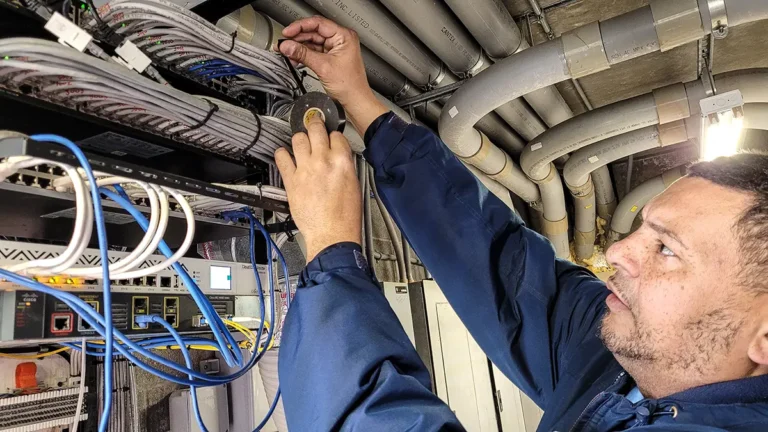Whether you’re planning technology deployment across multiple locations or deploying new hardware, it’s important to know what technology deployment questions to ask when preparing for your technology rollout. Sadly it’s not as simple as a snap of your fingers, but that doesn’t mean it has to be difficult, if it’s managed properly.
Here’s our list of the top 5 technology deployment questions every management team should ask before rollout.
1. Planning for Deployment
The first question every management team should should ask is: “Do we have the right plan in place, or are we relying on our vendor to build the plan?” Either way, you will have to develop a plan for yourselves or to provide to your vendor. Developing this plan provides a good statement of work (SOW) for all parties and can be incorporated into a request for proposal (RFP) to help with selecting a vendor. Don’t get caught in the trap of thinking that “we have to deploy x widgets at y sites in z time-frame” and that our vendor will take care of everything. Without a clear SOW for everyone to follow, you are setting unrealistic expectations that are likely to cause disappointment throughout the project rollout.
2. Integration
Hindsight is 20/20. Stop us if you’ve heard this one before: You’ve bought a new system that addresses a business need, only to find out that it doesn’t work with any of your other systems. In a world where everything seems to be connected, not everything is. In the large technology rollout of multiple sites, integration is typically handled either by your internal team, an external solution provider, or a combination of both, who then subcontracts the deployment of infrastructure at the sites to a technology rollout company specializing in this aspect. When dealing with a solution provider, although deployments will be done by their subcontractor, you should ask for the subcontractor’s qualifications and ensure that you feel comfortable with that firm performing the work.
3. Implementation
Now that you have your plan in place it’s time to think implementation, i.e.who will do the physical install? Consider all of the factors involved with deploying technology before you make this decision. Regardless, whether you decide to use your internal team or an external solution provider to manage the project, you should make sure that the technology rollout company (TRC) you select to perform the work at all your sites uses local resources (preferably with established relationships). If not, you should ask for the reasoning behind their approach. A qualified TRC project manager should be experienced in the technology to be deployed, as well as being skilled in managing local technology resources.
4. How does it work, aka how do we install it?
Learning on the fly is not an option if you are rolling out technology at multiple sites, because your learning curve may be manifested through a flood of unhappy customers… So, before flipping the switch on your project, make sure that your TRC has proven processes and methodologies in place that allow them to quickly assimilate new technologies and directly communicate that understanding to the local technicians in the field that will perform the deployment. If you decide to do the rollout yourself, you must be fully trained in the technologies to be deployed, as well as having the management methodologies and processes to train and manage the local technicians that will be performing the actual on-site work, and access to a pool of vetted local resources. Having local technicians helps to reduce cost by minimizing travel time.
5. Who will fix it?
No technology is perfect and systems break – it’s inevitable. This is where having a TRC with a vetted database of local resources comes in handy. By doing your rollout with local resources you are already set up for break/fix support, as well as moves/adds/changes. This way you get the best of both worlds; a local resource who is actively managed by your single point of contact, the TRC, who are themselves familiar with your site and can rapidly deploy the local resource when issues occur. When you multiply this advantage by the number of sites to be deployed, you will have a well organized and established team ready to serve you quickly.





